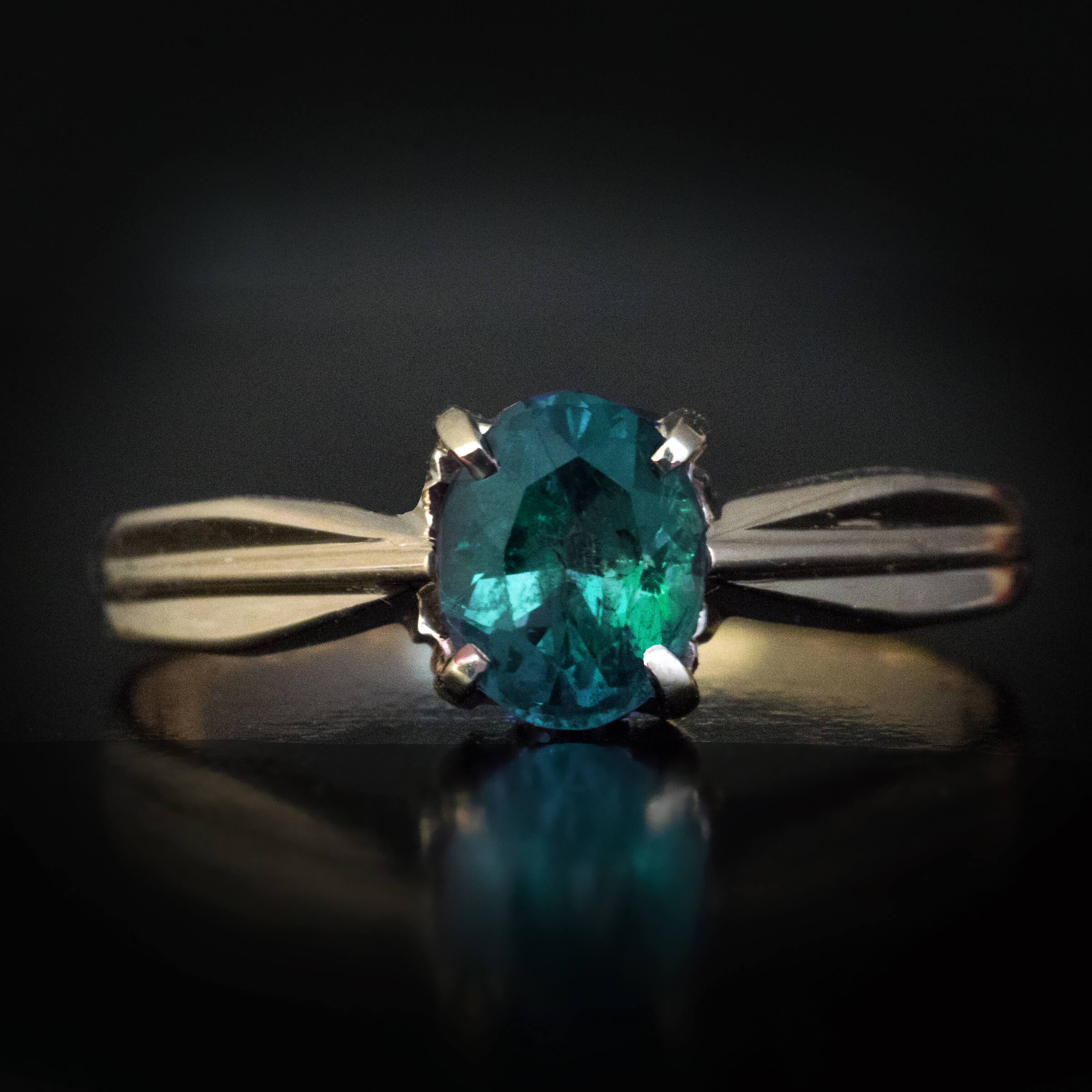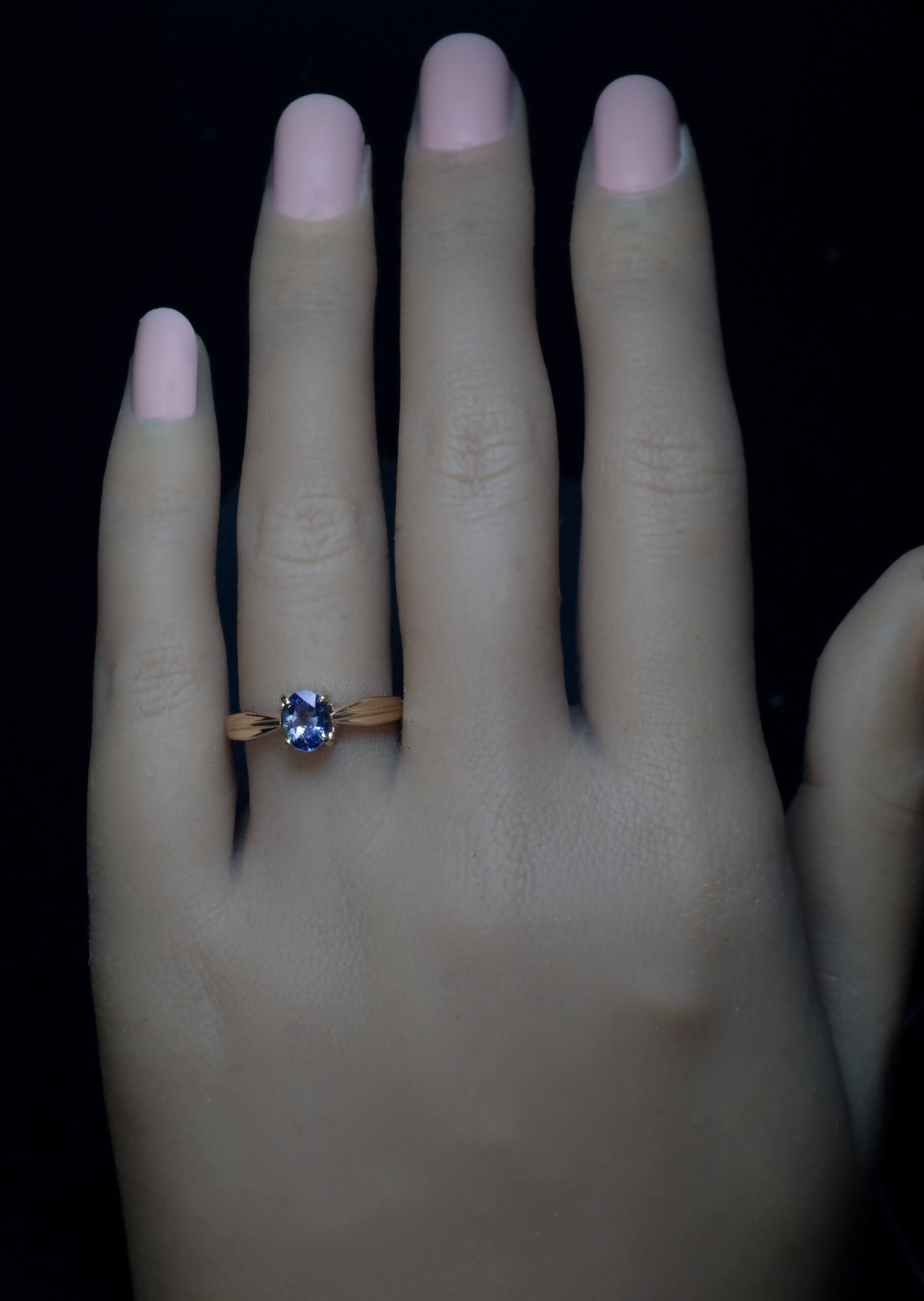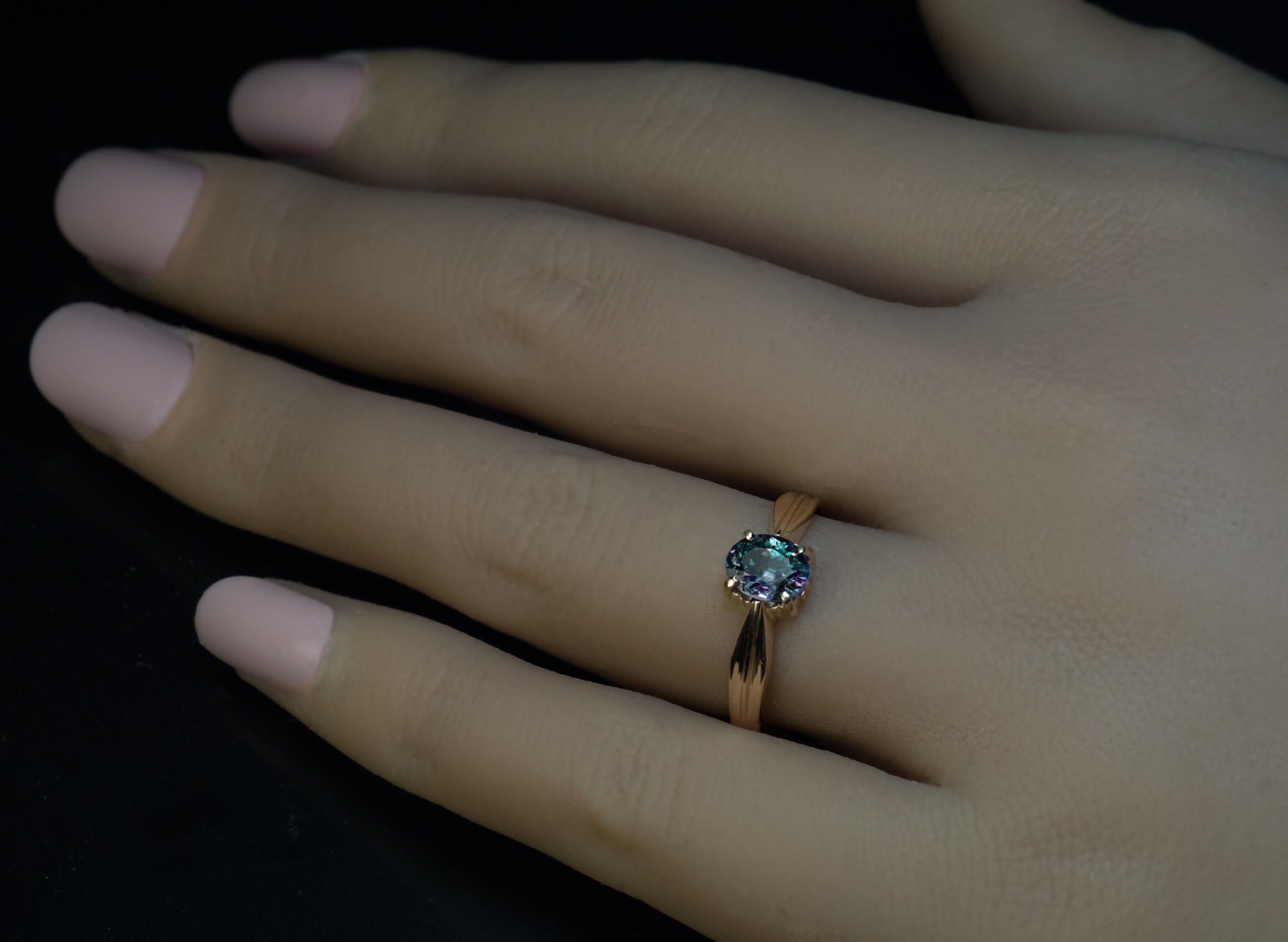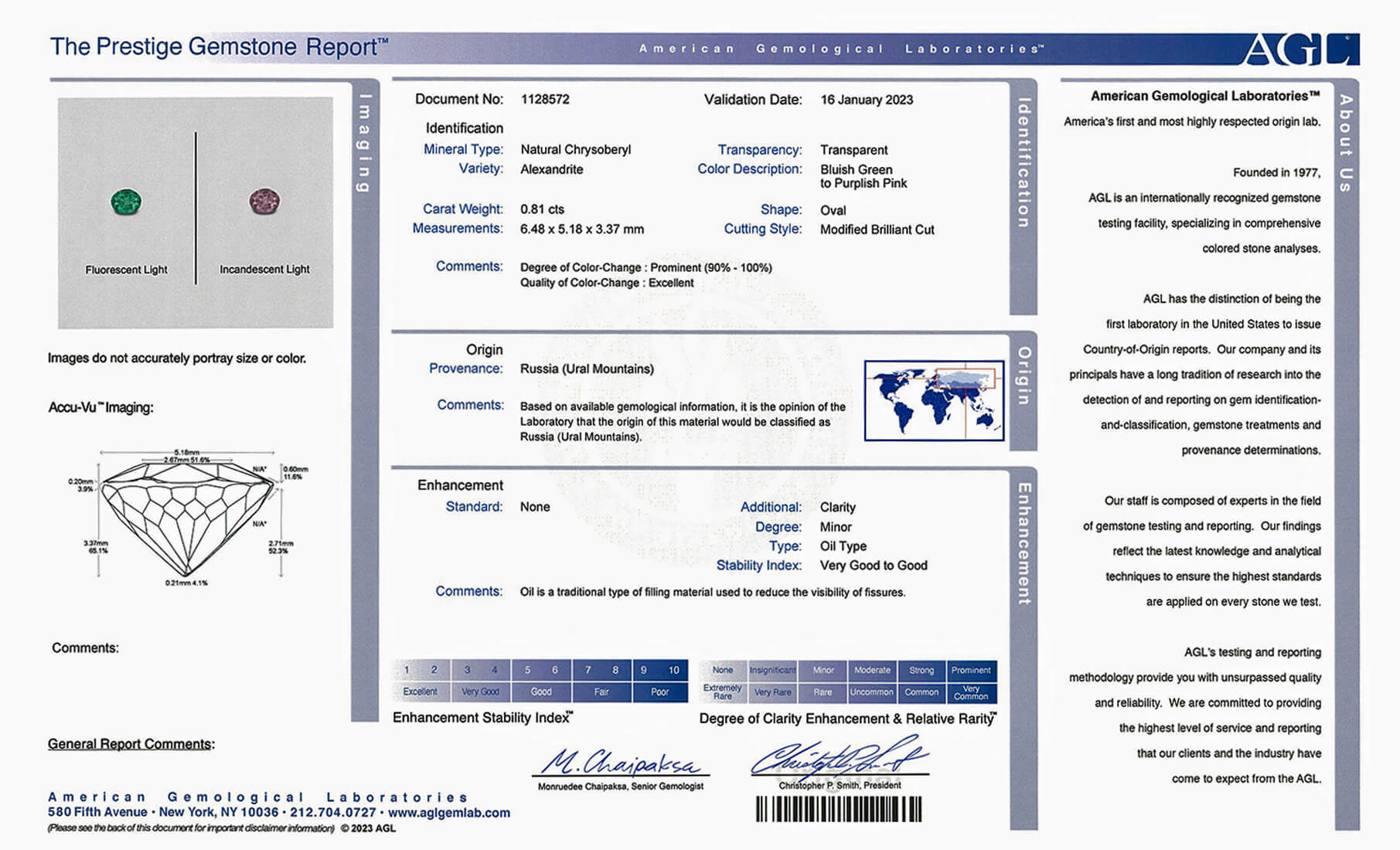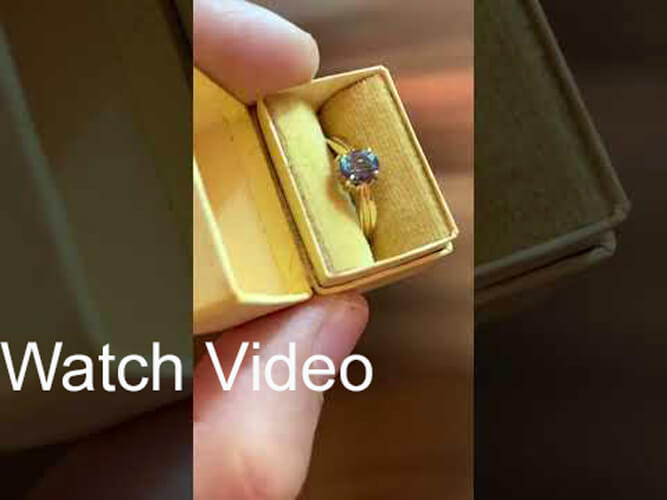This antique 14K gold ring from the early 1900s features a very rare 0.81 carat Russian Alexandrite with prominent color change (90 to 100%). The quality of color change from blue-green to pinkish purple is excellent.
The ring is accompanied by the American Gemological Laboratories Prestige gemstone report No. 1128572.
Ring size 8 (18 mm) resizable
Alexandrite, the color-change variety of Chrysoberyl was first discovered on April 17, 1834 in Russia’s Ural Mountains by the Finnish mineralogist Nils Gustaf Nordenskiold of the St. Petersburg Science Academy. He was amazed that at night, under candle light, the stone changed its color from green to purple. He named the newly discovered stone Alexandrite, in honor of Tsarevich Alexander (later Tsar Alexander II, ruled 1855-1881), who was turning 16 on the day of the discovery.
Alexandrite was a very rare stone even in the 1800s. Russian 19th century novelist Nicholas Leskov writes the following about alexandrites: “The mines from which the best alexandrites were mined got flooded by a river therefore alexandrite can be rarely found among Russian jewellers, as for foreign jewellers and gem cutters, they have only heard about it.”
Russia officially stopped mining alexandrites in 1995 due to the exhaustion of the mine.

